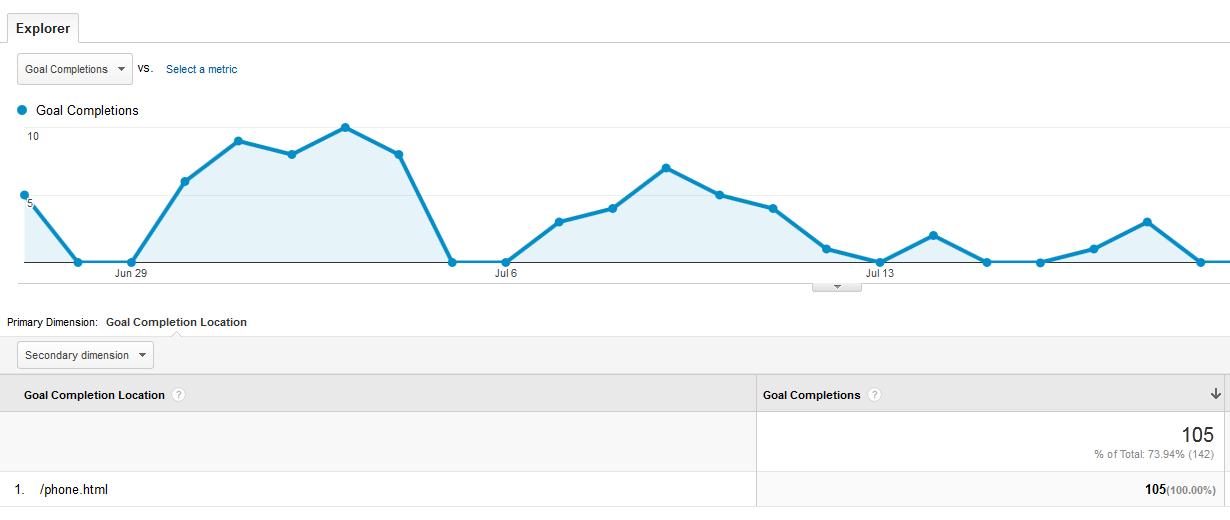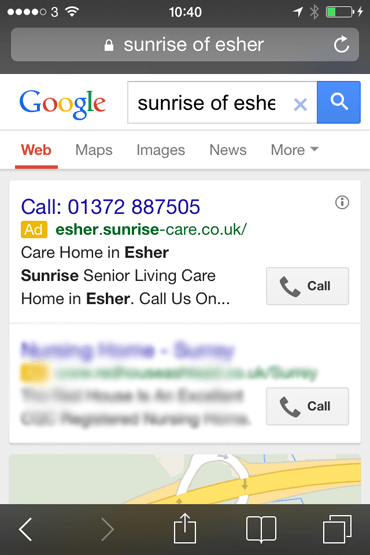When it comes to converting leads, having a solid understanding of user behavior is essential.
For instance, the increasing number of e-commerce platforms and ways to buy online would lead many marketers to believe that most online shopping is completed online.
But by using the correct tracking, it becomes obvious this is not the case. Graphs.net recently published an infographic stating “64% of website visitors complete their purchases offline”, making it clear that many internet users treat the internet like a virtual shopping window.
Not only are the majority of consumers making purchases offline, but according to a recent call tracking case study released by Mediahawk, a client of mine, the telephone plays a vital role in converting leads both offline and online. For instance, they discovered consumers who spoke to a group of online retailers on the telephone converted much more quickly online than website visitors who didn’t call at all. But without tracking and integrating this call data, they wouldn’t have been able to follow these leads through the sales cycle.
Lets talk about the three most important call data integrations and how tracking offline data can boost your profits and marketing efforts.
What Can You Use to Track Offline Purchases and Interactions?
There are a wide variety of ways to track your website users’ behavior such as event tracking, clicks, cookies, and heat maps. But when the user switches from online to the telephone, this is where the tracking finishes.
Call tracking extends the online tracking to an offline medium, allowing marketers to continue to collect information related to their callers’ website activity. It’s an effective way to distinguish which pages were visited and a good indication of why a website user picked up the phone, and if they went on to make a purchase.
So, instead of having gaping holes in your sales attributions, you’ll have a clear and complete picture of a lead’s full interaction with your website, social channels, phone conversations, and other marketing networks.
And why wouldn’t you want to track your telephone interactions?
It’s a well-known fact that telephone calls provide some of the highest quality leads and have a 10-15 times higher conversion rate than web inquiries.
How Call Tracking Works
Call tracking works by assigning unique numbers across different marketing channels so you can track which marketing collateral has been viewed and how a user has interacted with your site right up until they call you.
You can assign as many numbers as required to cover all possible paths of user behavior. So, for example, if a user decides to interact with your website by clicking on a paid advertisement, then that assigned phone number will be displayed. This is also the case if a different user opts to interact via a social network referral.
Call tracking enables you to have a more complete view of your marketing efforts. And which areas need addressing.
Drill Down Even Deeper by Analyzing Individual Calls
Detail and accountability is so important in marketing, which is why there’s the opportunity to drill down deeper into your call data. The best call tracking services utilize individually assigned numbers that sync with Google Analytics. This enables comprehensive and detailed reporting that reveals everything from visitor time on site, pages visited before, during, and after calling, and crucially, the keyword referral that prompted the visitor to make the call.
Here you can see my agency’s call data for one particular visitor who interacted with our content up to 30 times before making a call.
Our call tracking reporting suite tracks the activity as a sequence of events that reveal the user’s journey up until they called us, including the type of content they’re interested in – we’re even able to listen to the call to see how successful we were with converting them.
Because each lead’s conversion path can be broken down into these steps, it is much easier to improve the efficiency of the conversion path and ultimately improve your return on investment. You’ll soon collect enough complete data to find out which campaign produces the best conversions – and more sales.
But remember, it’s not enough to look at this call report. You need to integrate your call tracking software with Google Analytics and your CRM system of choice to see the full sales loop in order to optimize the conversion process.
Easy Call Tracking Installation and Integration
Installing call tracking onto your website is quick and easy; all you need to do is insert a piece of JavaScript code into your website. Then it’s just a case of setting up the parameters within your call tracking software – this could be a number assigned to your latest PDF download.
Most call tracking software provides a detailed analysis of call data, which can be assimilated into Google Analytics.
Integration with Google Analytics
In the analytics software, the phone call becomes another element that can be set up as a conversion, just as a click or page visit might. This means you can view offline calls in conjunction with all other aspects of online user behavior you need to track and analyze…and ultimately discern the pages generating the most calls.
Once you set up your campaigns and goal pages within your analytics software, you can head over to Google Analytics to configure phone calls associated with your goal webpages:
- Log into Analytics
- Click through Admin → Goals → New Goal
- Fill in fields:
- Goal Name
- Set URL Destination as Goal Type
- Give the Goal a name
- Click Next Step
- Set the goal URL as a page name e.g.: ‘/calls.html’
- Select Create Goal
Goal tracking allows your call tracking service to register each call as a goal within Google Analytics in the same way you track sales or a completed contact form.
 Screenshot taken from Receptional’s Google Analytics 29/07/2014
Screenshot taken from Receptional’s Google Analytics 29/07/2014This integration will give you a better understanding of which pages are generating the most calls and perhaps, where your website needs to optimized to generate more calls.
Integration With CRM Software
Many call tracking services can be integrated with CRM systems like Salesforce and HubSpot.
Your CRM software collects all of the call information, so it’s important to integrate this with the rest of your lead data so you can see all your call data in context, tracing the conversion path right back to the trigger keyword.
But what makes this integration even more crucial is that you’ll have lead information about every single prospect who calls, including missed calls.
According to a joint study between M.I.T and InsideSales.com, your chances of turning a missed phone lead drop 100% within the first five minutes of expressing interest, while the odds of qualifying that lead decrease 6x after the first 60 minutes.
So really, first contact should be made in seconds, not hours, if you want to turn the missed caller into an interested prospect.
Therefore, by combining call tracking browsing behavior into your CRM, you’ll be able to contact the new lead almost immediately after they enter their information – and you’ll know almost exactly what they’re interested in, allowing you to prepare the best possible response.
This detailed overview allows you to keep improving the user’s journey so conversions become quicker and more efficient, with fewer obstacles and a clearer call to action.
Why You Need Google AdWords to Increase Your Conversions
Here’s a fact for you to consider – the majority of local mobile searches (70%) end in a call directly from the search results pages. So it’s incredibly important to utilise the “Click To Call” ad extension in your AdWords ads.
This feature is a free add-on and provides your phone number in the search engine results pages as the biggest call to action within your ad. If your call tracking data reveals your best quality leads arise from mobile searches, then placing your number within your ads is like adding a big, shiny button that implores the searcher to make the call. With carefully selected target keywords, this should result in an increase in leads and hopefully conversions.
 Screenshot taken: 29/07/2014
Screenshot taken: 29/07/2014Google reports that Click to Call mobile campaigns produce around 5-30% more conversions than the ‘click here’ standard call to action favored by desktop users.
The information provided from these mobile calls is valuable data. You’ll be able to discern everything from the caller’s location, the ad they came across, and the keyword that they entered that led them to make the call. With all this data to hand, you’ll be able to continue to fine-tune your ads to increase conversion rates and even use the keyword data to optimise other channels and content.
Displaying your number in Google’s search engine pages makes it much easier for users to contact a person rather than having to go through the rigmarole of filling out online forms on their mobile device. Again, it’s all about making the process efficient, convenient and removing obstacles from the user journey.
Let’s Sum it All Up
In an age of emails, instant messaging and live chat, phone calls are as important as ever to businesses and customers alike. So it is not surprising to learn that data collated from these phone calls is valuable to your marketing strategies, and should be considered a strong influencer when it comes to developing leads, conversions, up-sales and more.
The key to success is a quick response to inquiries and potential leads, and call tracking data allows you to go head-first into the response conversation, armed with the detailed knowledge you need about the prospect.
The question you now need to ask yourself is how call tracking data could benefit your business and increase your conversions.
Featured image/Flickr Creative Comms: https://www.flickr.com/photos/elsie/





![AI Overviews: We Reverse-Engineered Them So You Don't Have To [+ What You Need To Do Next]](https://www.searchenginejournal.com/wp-content/uploads/2025/04/sidebar1x-455.png)